Early 17th Century Womens Outfit
To go with the reproduction of a 1620-25 blackwork waistcoat that I am still in the process of making, I made the rest of the outfit an upper class 17th century woman may wear with it.



The shift is based on the 1605-15 shift pattern in Patterns of Fashion 4 - Janet Arnold, with a few minor size alterations. The embroidery design is taken from a later 1620-30’s smock. The shift is made in a 1.65oz linen voile, the seams are all machined, and hems and seams are finished by hand. All the embroidery and seam decorations are done by hand in a pink silk, and the fingerloop braid ties are also done in silk and linen thread.


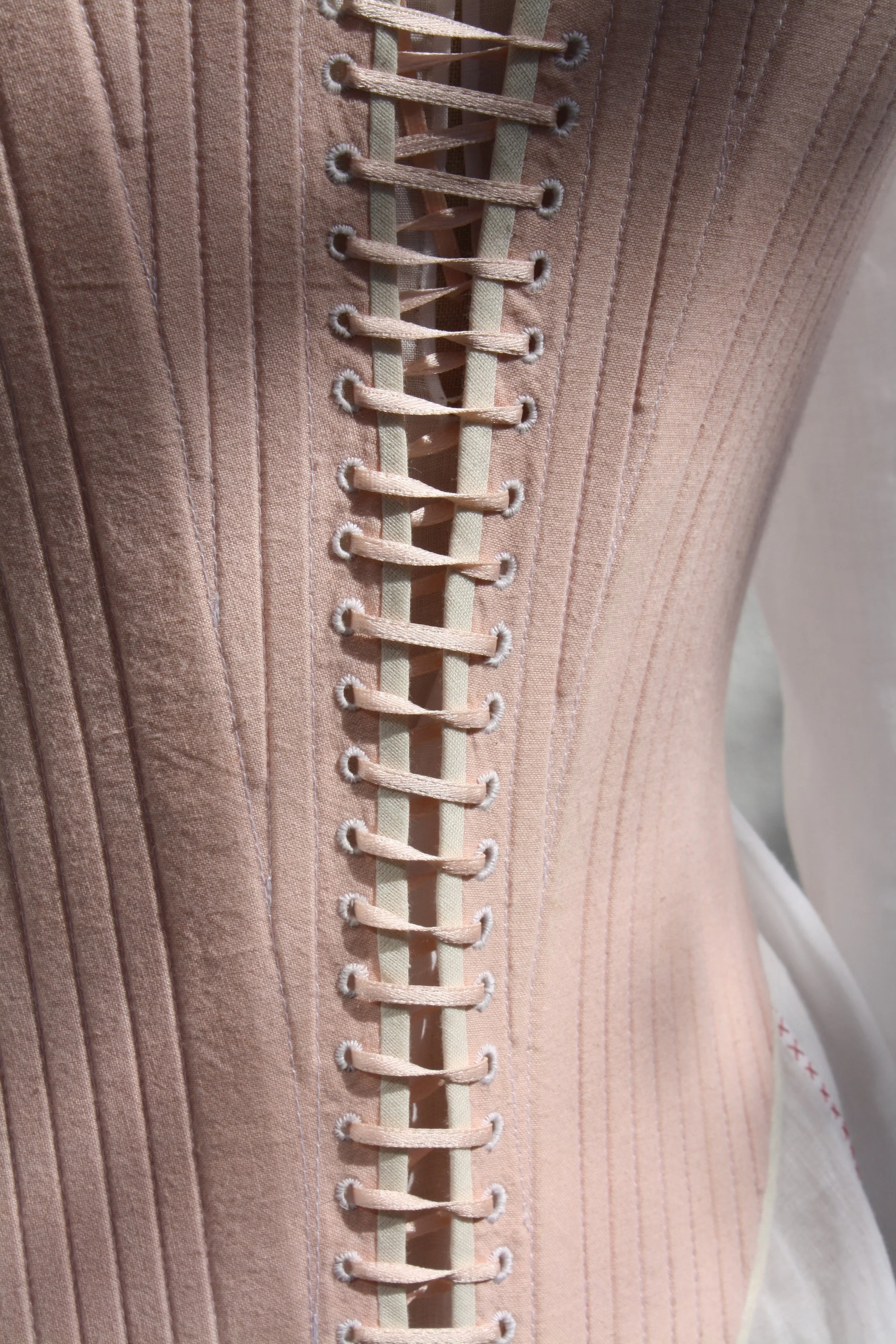
The stays are the 1603 effigy stays from Patterns of Fashion 5 - Janet Arnold, Jenny Tiramani, made in dyed calico and coutil. It was machine sewn together and then hand finished on seams and binding, including all 66 hand bound eyelets.



For this costume, I am working backwards from the waistcoat, and working out what fits under it. Using this toile, I made of the waistcoat, I was able to experiment to work out what would fit best on top of the stays to support the shape. Something unusual about this specific waistcoat is there is no gore on the centre back, which is something I’ve seen on pretty much every other waistcoat I’ve looked at. This gives the weird shape that means more padding is needed at the front of the waistcoat than the back. Following this I made a simple bumroll, and smaller pad that would support the waistcoat shape fully when worn with skirts.
I also made a simple knife pleated calico petticoat

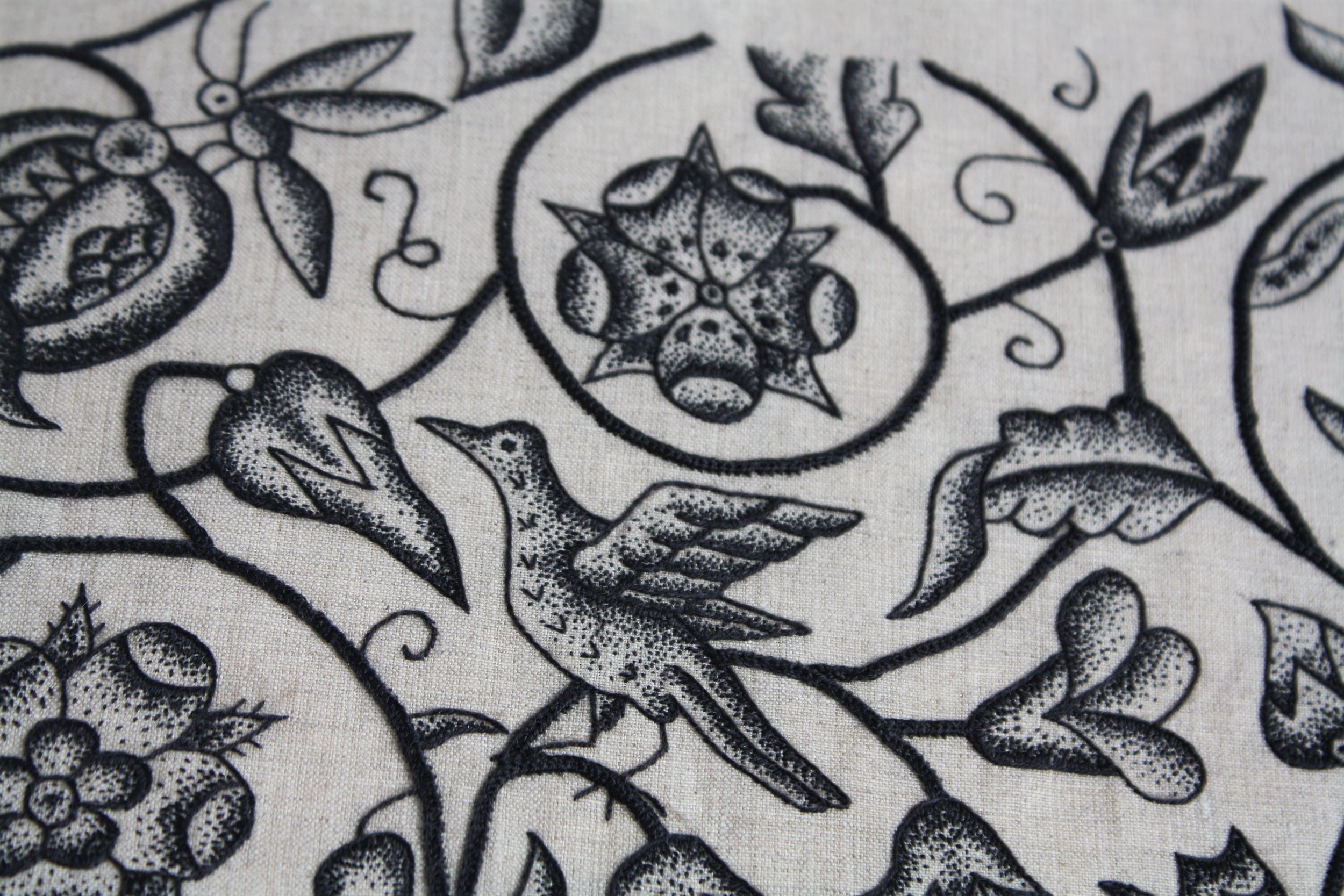
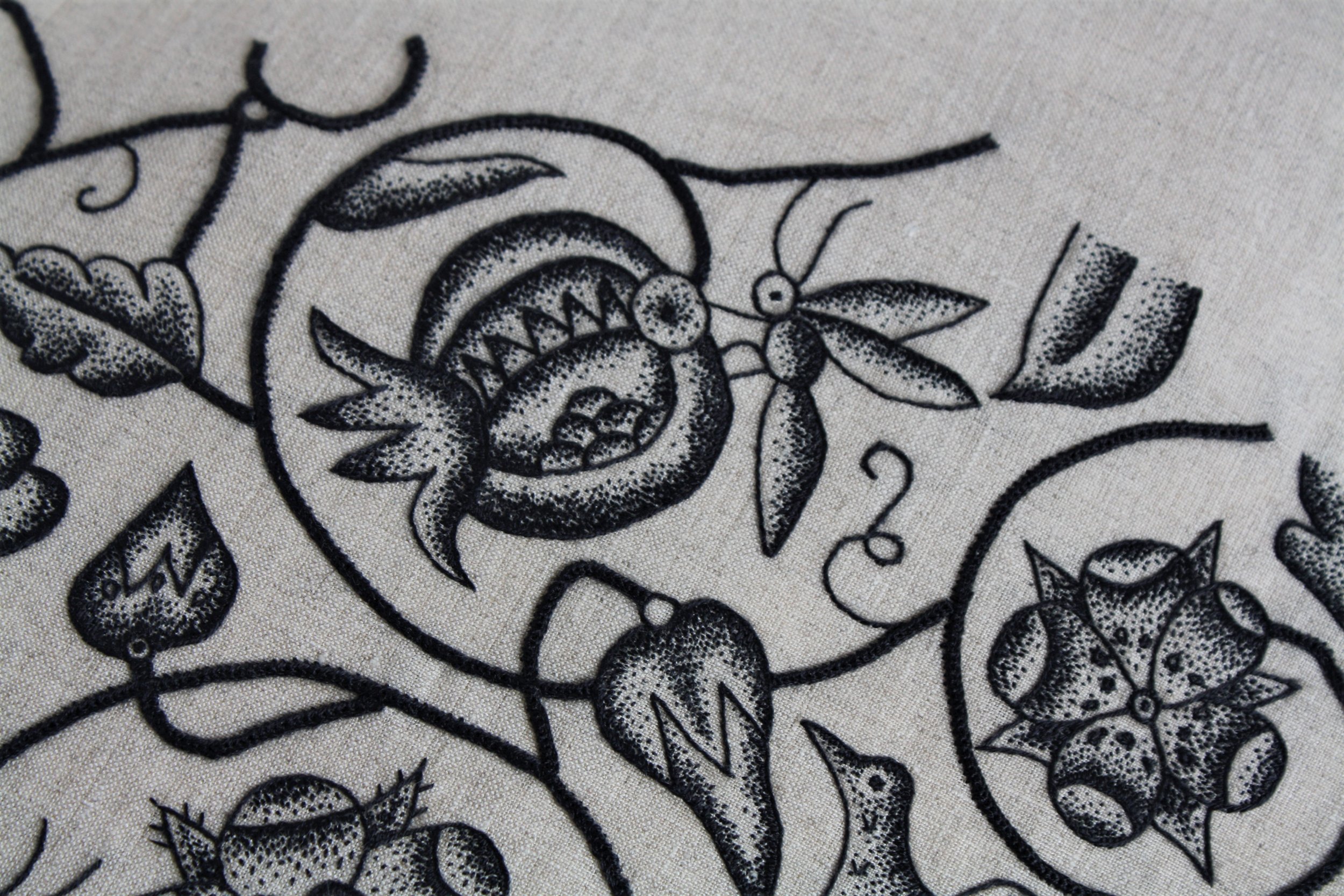
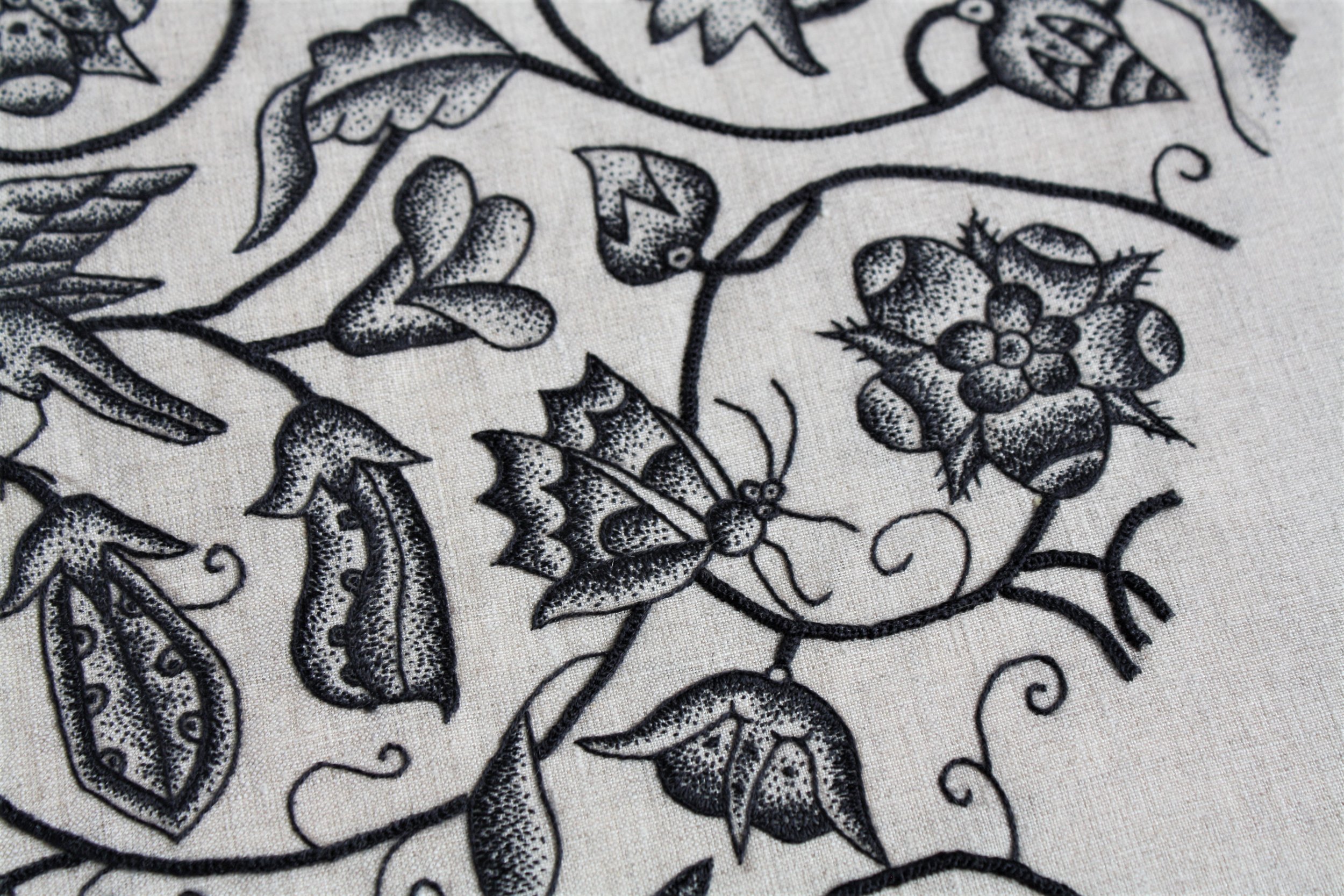
I started the waistcoat project following the guidelines for the Patterns of Fashion competition. This was helpful in giving me some rules to follow, as well as sticking to making the garment at the original size, meant I didn’t have to deal with scaling up or altering the embroidery design. I am lucky that this piece is in 17th Century Womens Dress Patterns Book One - Susan North, Jenny Tiramani, which means I have a great selection of photos and notes to work from.
Despite the PoF guidelines saying that an entry may be completed in calico, I chose to find a linen fabric to work in. As the whole waistcoat is embroidered, the weight and fineness of the fabric would massively change how the embroidery sits – as well as how easy it would be to embroider on. Linen as fine as the original is impossible to find, its 96 x96 threads per inch. After a month of so of sampling I managed to find a fine unbleached linen at 76 x 76 threads per inch.
I am completing the embroidery in a 2 ply black silk thread, and the lace in a finer 2 ply black silk + linen. I decided to use ½ bleached thread for the lace, as the waistcoat is in unbleached, it still looks bright white next to it – just not, artificially chemically white.
I am working the embroidery in the same way it would have been completed originally, each piece is framed up on a slate frame and the pattern is pricked and pounced onto the linen with a charcoal mix.
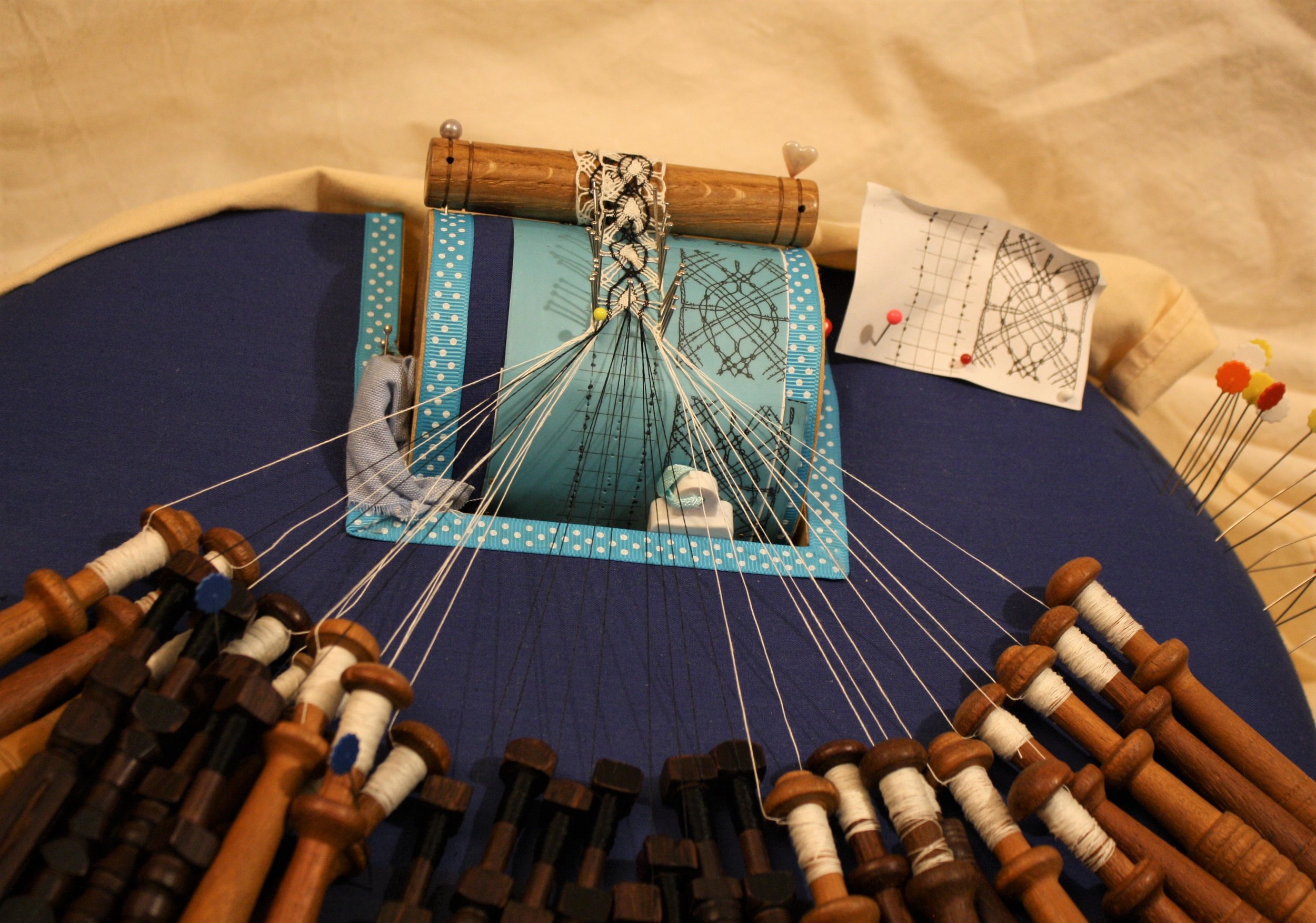

I am making the edging and inset lace for the project by hand. I’m very lucky that by coincidence, both laces are covered in Gil Dye’s series of booklets on 16th +17th century laces, and I can use those for the pattern.